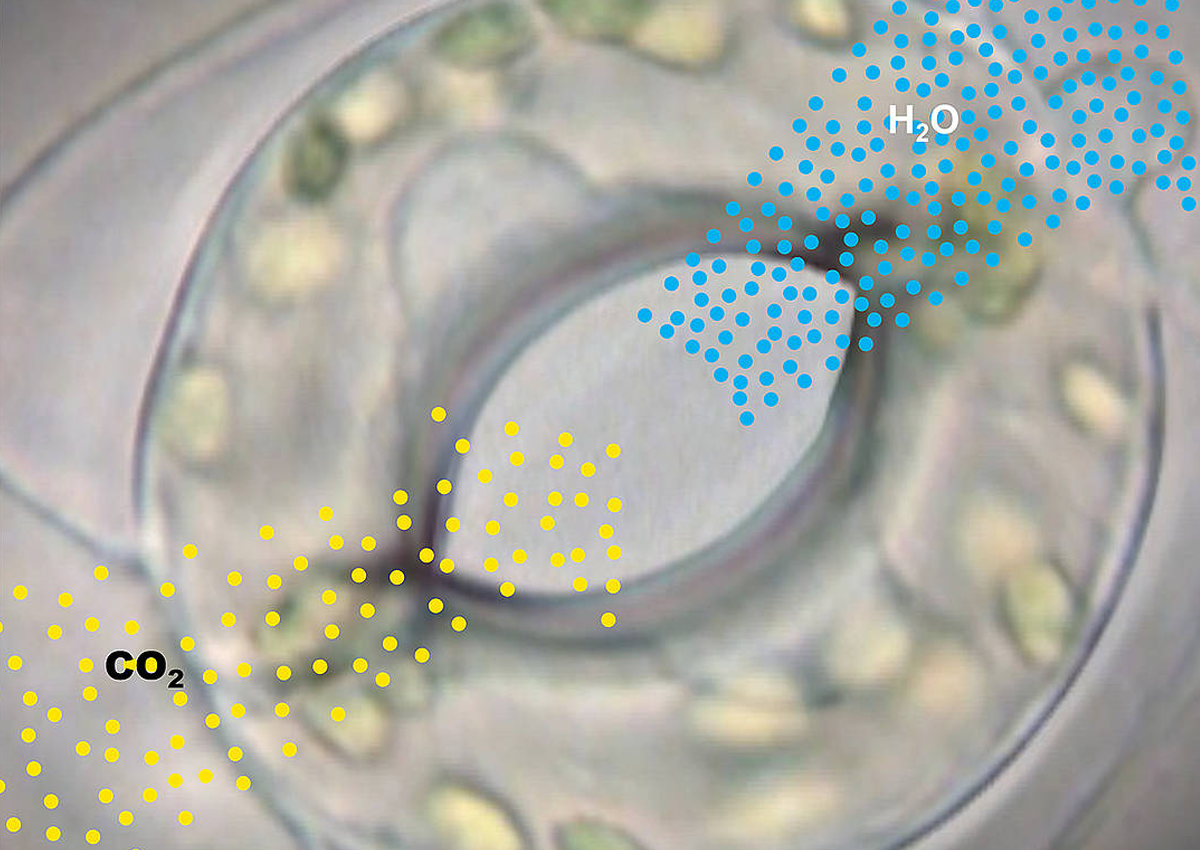
Research Finds How Plants Measure CO2 Uptake
August 28, 2019| |
An international team of plant scientists has identified the sensors that plants use to navigate between drying out and starving in dry conditions. Led by Rainer Hedrich, a biophysicist from Julius-Maximilians-Universität (JMU) Würzburg in Bavaria, Germany, the research team published the results of their research in Nature Plants.
The stomata of plants are comprised of pores and guard cells. The guard cells must be able to measure photosynthesis and water supply to respond appropriately to changing environmental conditions. They use a receptor to measure the CO2 concentration inside the leaf. Sharp increases in CO2 levels signify that photosynthesis is not running ideally. The pores close to prevent unnecessary evaporation and reopen once the CO2 concentration has fallen. Water supply, on the other hand, is measured through the hormone abscisic acid (ABA). This hormone is produced when water is scarce, and plants set their CO2 control cycle to water-saving mode. This process is possible through guard cells fitted with ABA receptors. When the hormone concentration in the leaf increases, the pores close.
"We conclude from the findings that the guard cells offset the current photosynthetic carbon fixation performance with the status of the water balance using ABA as the currency," Hedrich explains. They found that when water supply is good, ABA receptors evaluate the basic hormonal balance as quasi 'stress-free' and keep the stomata open for CO2 supply. When water is scarce, drought stress receptors recognize the elevated ABA level and make the guard cells close the stomata to prevent the plant from drying out.
For more details, read the news release on the JMU website.
| |
You might also like:
- New Type of Photosynthesis Discovered
- Structure and Function of Photosynthesis Protein Explained in Detail
- Rice Plants Engineered for Better Photosynthesis Make More Rice
Biotech Updates is a weekly newsletter of ISAAA, a not-for-profit organization. It is distributed for free to over 22,000 subscribers worldwide to inform them about the key developments in biosciences, especially in biotechnology. Your support will help us in our mission to feed the world with knowledge. You can help by donating as little as $10.
-
See more articles:
-
News from Around the World
- Major GM Crops Hit Saturation Point in Biggest Markets, ISAAA Reports
- GM Crop Adoption Continues to Move Forward in Africa
- BASF Launches Herbicide Tolerant Stacked Traits Soybeans
- 'Spread the Gospel of Biotech' - PH Agriculture Official
- Mainland South Australia to Lift GMO Ban
- Research Finds How Plants Measure CO2 Uptake
-
Research Highlights
- Scientists Complete High-resolution 3D Genome Map of Rice
- Research Sheds Light on Key Component of Plant Immune Systems
-
Plant
- Classification of Genome-edited Plants Define How They Are Regulated
- Rain-resistant Wheat Developed Using Genome Editing
-
Read the latest: - Biotech Updates (December 17, 2025)
- Gene Editing Supplement (December 17, 2025)
- Gene Drive Supplement (February 22, 2023)
-
Subscribe to BU: - Share
- Tweet

